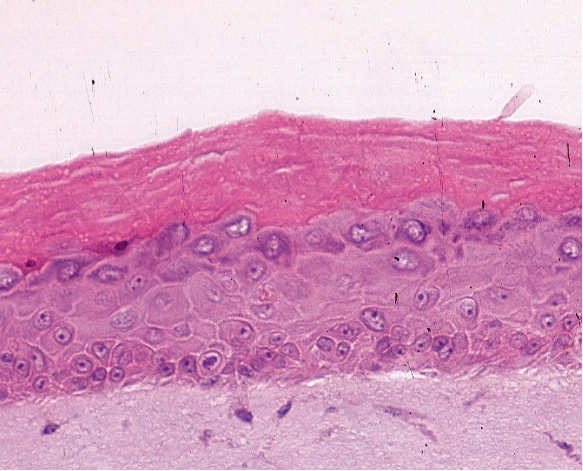Accredited cell culture model avoids animal experiments
Before a new medical device can be launched onto the market its biological compatibility has to be demonstrated. Fraunhofer IGB has received accreditation for this test also with its three-dimensional skin model, an organoid in-vitro tissue model. The skin model is also suitable for testing chemicals according to the new EU chemical directive REACH. In both instances it helps to avoid animal experiments.


Before contact lenses, dialysis equipment, cardiac catheters or absorbable surgical suture material come onto the European market, the manufacturer must demonstrate with the CE mark that the products are safe. An important criterion for CE recognition of medical devices is their biological compatibility. This must be demonstrated by relevant tests. To reduce the number of animal studies, other methods may also be utilized for this purpose: biocompatibility can be tested on cell lines or simple cell cultures in the laboratory (in vitro). The informative value of the tests using simple cell cultures is however limited as body tissue such as the skin consists of different cell types that interact with each other and with the medical device.
In its accredited test laboratory the Fraunhofer Institute for Interfacial Engineering and Biotechnology IGB in Stuttgart offers biocompatibility testing of medical devices according to standard DIN EN ISO/IEC 10993-5 on cell lines, primary cells and also on a patented three-dimensional skin model. “Our skin model is the first accredited in-vitro test system that has a structure like complex human tissue” says Professor Heike Walles, Head of Department Cell Systems at Fraunhofer IGB, proudly. The artificial skin at Fraunhofer IGB is made up of human cells and just like its natural example has an inner layer (dermis) and outer layer (epidermis) – the latter with its typical multilayer structure. Even the horny layer is present. “This is important as it assumes the function of a barrier thus preventing many substances from penetrating deeper into the skin” explains Dr. Michaela Weimer, who constructed the skin model and has continued to refine it.
To test biocompatibility or toxicity the scientists at Fraunhofer IGB test the vitality and activity of cells, identify inflammatory mediators and investigate whether the test material damages cell morphology. Molecular-biological methods are also used, such as monitoring cell proliferation and cell differentiation at the protein level.
The artificial skin can however be used equally well for preliminary toxicity testing of chemicals: if the substance to be tested damages the skin cells this is demonstrated within minutes by a chemical reaction. The skin model therefore helps to avoid animal experiments. As the new EU Chemical Directive REACH comes into force on 1st June 2007 (Registration, Evaluation and Authorization of Chemicals) manufacturers and importers must investigate the effects of chemicals on human health. Almost 30,000 old chemicals are affected that have been on sale for decades but so far have been inadequately tested. To prevent the number of animal experiments increasing unnecessarily, REACH is definitely also providing for alternative tests on cell cultures (in vitro) for the purposes of toxicity testing.
The advantage of the standardized IGB skin is that the characteristics of human skin can be adjusted precisely and reproducibly. “The results obtained with testing of chemicals, medical devices or cosmetics have a much greater informative value than studies in mice where the skin structure is quite different”, says Michaela Weimer. “In addition in-vitro tests are more cost-effective than animal studies and deliver faster results”, the expert knows.
 Fraunhofer Institute for Interfacial Engineering and Biotechnology IGB
Fraunhofer Institute for Interfacial Engineering and Biotechnology IGB